Meet the crew ready to fly into action in the new Northamptonshire air ambulance
and live on Freeview channel 276
Bright yellow air ambulances are now a familiar sight above the skies of Northamptonshire as they criss-cross overhead high on their way to another rescue mission.
Everyone who sees a Warwickshire and Northamptonshire Air Ambulance (WNAA) or the Derbyshire, Leicestershire and Rutland Air Ambulance (DLRAA) fly by must pause and wonder where the crew is going and what will they find when they reach their destination - its one ride we would not wish to have to take.
Advertisement
Hide AdAdvertisement
Hide AdThis week has seen the official launch of two new state-of-the-art air ambulance aircraft ready to scramble at a moment's notice to help people in crisis in the county.
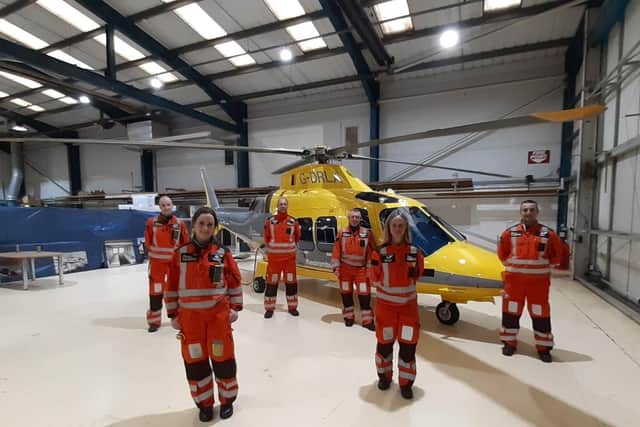

The pair of twin-engine AW109 helicopters, leased by the WNAA along with the DLRAA, part of The Air Ambulance Service (TAAS), replace the previous aircraft that have reached the end of their operational lives.
TAAS CEO Andy Williamson said: “These wonderful new aircraft are the culmination of a lot of hard work by our supporters, the charity and our stakeholders and I am very proud to see it come to fruition and of all those involved in making the dream a reality.
“The difference the charity’s two new helicopters will make to the tens of thousands of lives they will touch, directly or indirectly, over the next seven years is very significant and that’s what this charity is all about. For us now though the hard work really begins."
Advertisement
Hide AdAdvertisement
Hide AdLeased from Sywell-based Sloane Helicopters, in a seven-year deal worth £30 million, the sleek Leonardo AW109 GrandNew EMS helicopters have been specially kitted out for medical use.
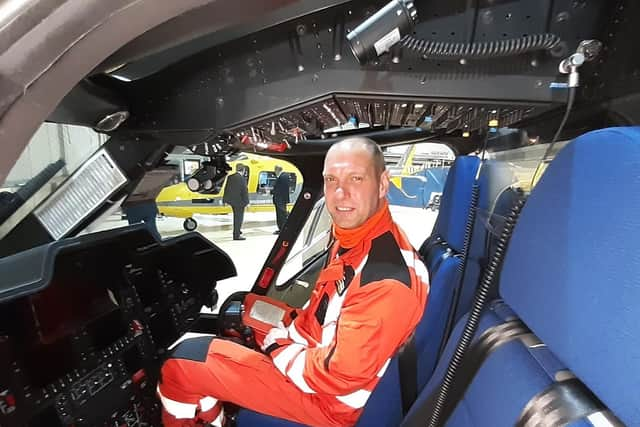

There is space for a stretcher and crew and is fitted with other specialist equipment including a new syringe pump system as well as better storage solutions for vital lifesaving equipment such as a defibrillator, ventilator and ultrasound.
The vital medical equipment carried by the emergency medical experts - a doctor and a paramedic - means the aircraft is a mobile operating theatre, delivery suite, ICU and A&E rolled into one.
The helicopter providers - Sloane Helicopters
Jeremy Awenat, managing director of Sloane Helicopters, said: “We are delighted to be able to provide TAAS with the aircraft and we are proud to be supporting the charity.
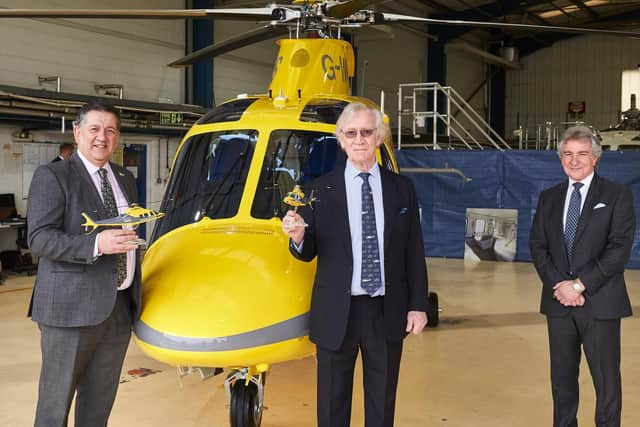

Advertisement
Hide AdAdvertisement
Hide Ad"We have been partnered with WNAA since its inception in 2003 and DLRAA since 2008.
"The engineering team at Sloane has provided an excellent service in preparing the helicopters, during this period of lockdown, by incorporating numerous clinical and operational modifications to ensure that the best clinical outcomes are achieved."
Sloane Helicopters is the largest on-shore helicopter business in the UK providing helicopter sales, engineering and maintenance, flight operations and a flying school and training.
David George, chairman and founder of Sloane Helicopters, said: "There's lots of different aspects of our business but this is the most rewarding aspect. We are delighted to be working with the community.
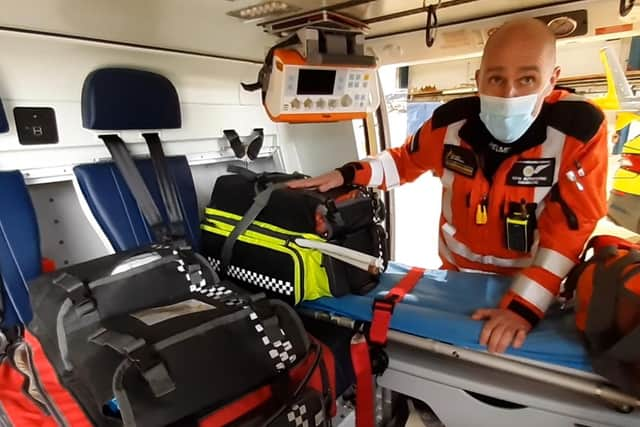

Advertisement
Hide AdAdvertisement
Hide Ad"We provide the pilots, the maintenance, the AOC (Air Operator Certificate), insurance and even spare aircraft so when one aircraft is in for routine maintenance we don't want to leave the charity without an aircraft."
The person behind the controls - pilot Joe Moore
Air ambulance pilot Joe Moore, who lives in Long Buckby, trained at Sloane Helicopters. It was while taking a flight that he first saw the fledgling air ambulance service.
He said: "When I first learned to fly I saw the air ambulance and knew that's what I wanted to fly. It's the best kind of flying a helicopter pilot can have because you get to land in places you would never normally be able to go.
"We have to land in town centres, on the top of multi-storey car parks, on helipads on hospitals, on top of hills in the Peak District - the only things that make it difficult are people, mobile cranes and cables.
Advertisement
Hide AdAdvertisement
Hide Ad"When the bell goes, I get the aircraft ready and we can be up in the air in two-and-a-half minutes."
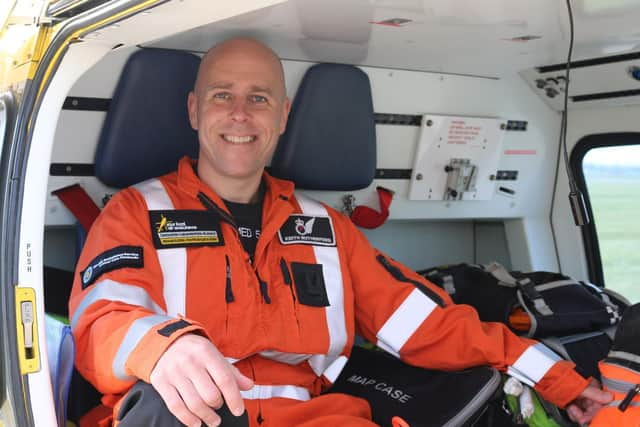

The new helicopter has the latest GPS technology to allow the team to reach their destination as quickly as possible. The rotor blades close down more quickly - in one-and-a-half minutes - to ensure the safety of the crew and others on the ground.
Mr Moore, 48, who has more than two decades' flying experience, has been with TAAS for nine years, previously he worked as a commercial pilot.
The helicopters do not fly at night - although they can take off at dawn as the light improves - and are grounded in 'icing' conditions such as freezing rain, in falling or powdery snow, or in fog or mist.
Advertisement
Hide AdAdvertisement
Hide AdHigh winds can be tricky with the aircraft grounded if winds reach above 40 knots or 45mph. And although large commercial car parks might seem good landing spots the black cables against the dark asphalt can be very dangerous.
He said: "We only take on the most experienced pilots. It's the landing and take-off that can't be done in high winds but there are always sheltered spots near buildings. Sometimes I think I know a good landing spot that I've used before and the next time I come to use it there's a building site.
"When we arrive, my job is as a helper - I do crowd control, carry equipment, help the medical team. The most missions I've flown in one day is ten. For all the crew that are parents, when we get home the kids get an extra hug at night."
Each of the new helicopters, crewed by the pilot, doctor and a critical care paramedic, offer an improved clinical area for the crews to work in while caring for a patient.
Advertisement
Hide AdAdvertisement
Hide AdThese clinicians are able to perform out of hospital surgical procedures from thoracotomies and caesareans to amputations by the roadside.
After a 999 call comes in it is the Ambulance Service who initially assess if an air ambulance is scrambled to the scene, the injured person might be in a remote location or the medical team on the scene may need the patient to get as quickly as possible to a major trauma centre, sometimes it is to provide urgent medical assistance with the stabilised patient being transferred by road ambulance.
The medical team - paramedics - Keith Rutherford and Pip Gibbs
When a mission is allocated by ambulance control, leaping into the air ambulance and sitting alongside the pilot in the cockpit is the paramedic - directly employed by TAAS.
Advertisement
Hide AdAdvertisement
Hide AdIt is the paramedic who gets the location of where help is needed and punches in the coordinates of their destination.
Working with the pilot on preflight cross checks and helping with navigation, the paramedic sits next to the pilot, while the doctor remains in the rear of the aircraft - currently divided by a Covid screen - to maintain a clean area.
Keith Rutherford started as a paramedic with the then Two Shires Ambulance Trust now East Midlands Ambulance Service (EMAS) and became an original member of the WNAA team back in 2003.
Keith, from Thrapston, has crewed at least six different aircraft in his 18-year service. He saw the job advertised and had to undergo written exams, and a rigorous medical assessment including a fitness bleep test.
Advertisement
Hide AdAdvertisement
Hide AdHe said: "We have to be physically fit because of the equipment we have to carry over sometimes long distances across fields and up hills especially in the Peak District.
"The bags weigh in total about 20kg as well as the defibrillator. It's the nature of the job. I remember my first mission. It was a lady who had a nasty facial injury and spinal injury after an accident with a horse. She made a very good recovery.
"All paramedics see nasty jobs but it's the frequency we see them. Some paramedics might come across a nasty one once or twice a year. We can see them once or twice a day.
"We are a very close-knit team and we talk to each other when we get back to base to debrief. We can also access counselling if we need to but talking to colleagues helps.
Advertisement
Hide AdAdvertisement
Hide Ad"I hope I am able to cope with it and I also talk to my wife who works as a EMAS paramedic based in Corby. I unwind by taking our dog for a walk and running marathons."
The team are paid for by charitable donations from the public - none of the costs are paid for by the Government. The paramedics were up until 2012, employed by the NHS ambulance service but now are employees of TAAS.
Philippa Gibbs from Kenilworth, an air ambulance paramedic since 2006 moved over to TAAS to become an employee of the charity.
She said: "It was a big step but I think it works out for the benefit of the service. We are happy that the public are so generous. It works for us - we can get the training that we need.
Advertisement
Hide AdAdvertisement
Hide Ad"Part of our personality is being able to cope with what we do and see. We all have missions that we remember for some reason. The best tonic for a patient is to put them at their ease - part of the reassurance ladder - we don't just rely on sophisticated equipment, we talk to them."
Charity in Covid
With an average cost of £1,700 per mission, the WNAA charity does not receive funding from the government or National Lottery and relies entirely on voluntary donations and support from communities and businesses.
TAAS CEO Andy Williamson said: “For us now though the hard work really begins. Our crews are available, 24/7, 365 days a year but we need the support of the public more than ever before so we can continue to deliver our lifesaving, frontline critical care.
“The pandemic has had a significant impact on so many including our own life-saving charity. We have faced a projected net loss of income of at least £2.2million for the months April to June last year, and worryingly we have started 2021 with another lockdown.
Advertisement
Hide AdAdvertisement
Hide Ad“Despite these losses and the multiple lockdowns, our 24/7 lifesaving service celebrated its 40,000th mission milestone last year, and has continued to remain on the frontline, fully operational for those who need us.”
Anyone wishing to find out more about the life-saving work of the charity can call 0300 3045 999 or visit www.theairambulanceservice.org.uk.
TAAS has attended more than 42,000 missions since its launch in 2003.
In 2020 the air ambulance completed 3,410 missions - a total of 508 hours in the sky - 1,367 by WNAA and 2,043 for DLRAA, and covered 63,183 miles in their critical care cars.
Advertisement
Hide AdAdvertisement
Hide AdAs a result of the lockdowns, there were fewer cars and therefore fewer accidents on the roads but the crews remained busy attending more medical incidents.
Medical emergencies accounted for 33 per cent, road traffic collisions 28 per cent, with the ‘other’ category – consisting of assaults, self-harm, and mental health incidents – accounting for a quarter of missions. Falls (10 per cent), sports (3 per cent) and industrial (two per cent) made up the rest.
Once again the charity has again had to temporarily close its chain of 56 stores during this third national lockdown, and community fundraising events remain on hold until the foreseeable future. The charity is urging the public to continue supporting them through donations, virtual fundraising events, and by shopping with them online.
To support the work of the WNAA click here